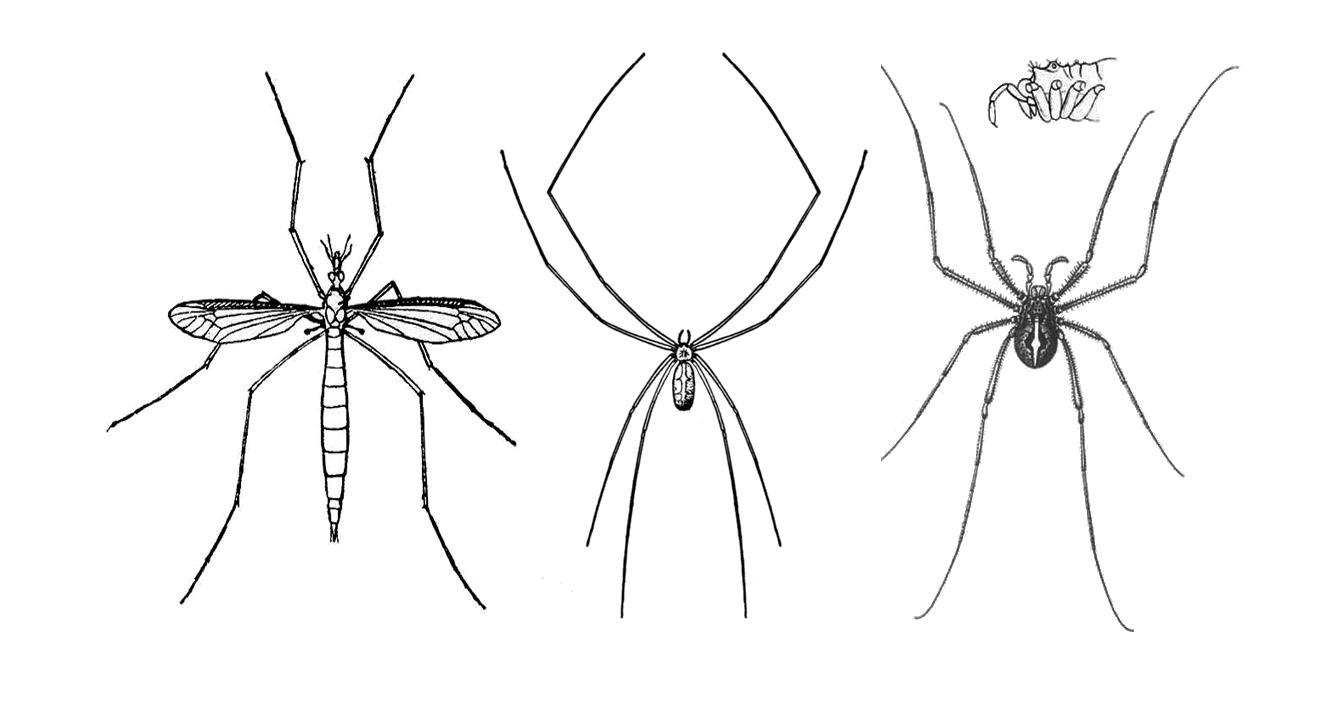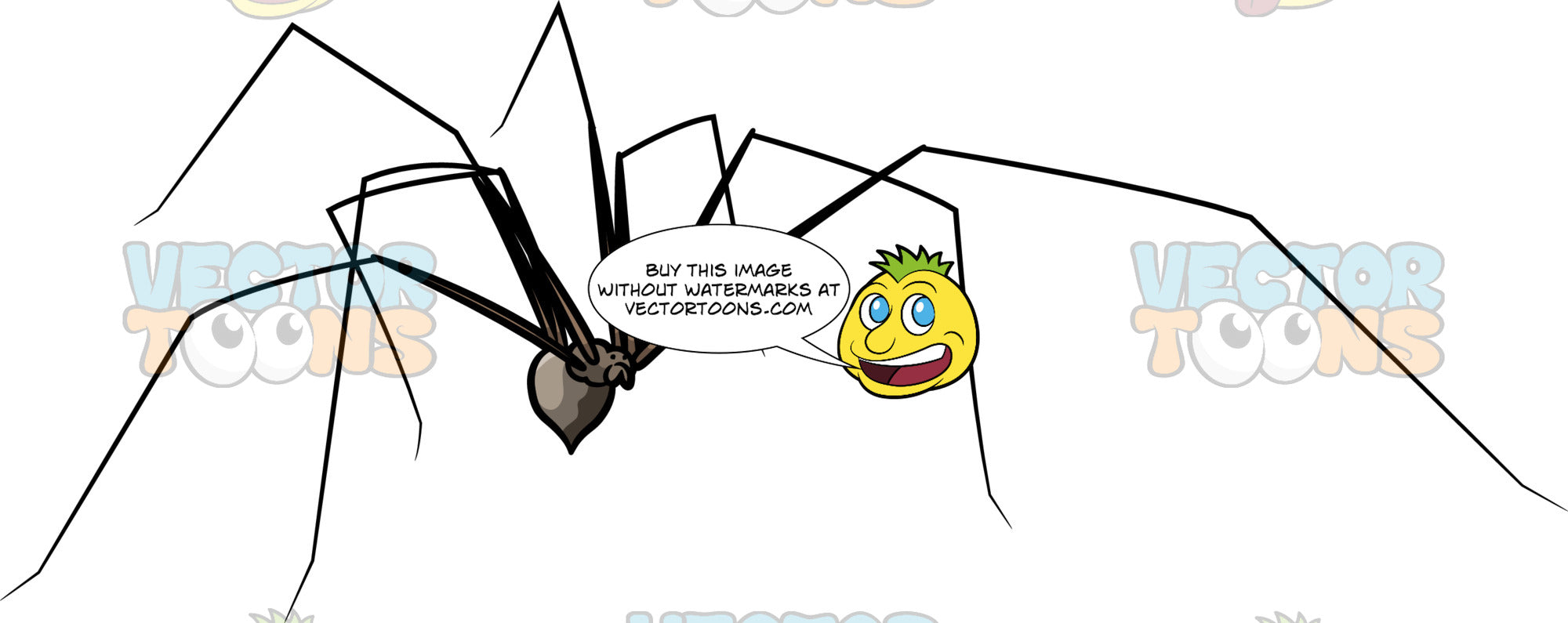

The male daddy long-legs spiders usually have much larger pedipalps than their female counterparts. The pedipalps, the small appendages found at the front of the cephalothorax, are the secondary reproductive organs of these spiders. The species, Pholcus phalangioides, is also known by the name of skull spider, as their cephalothroax region resembles the human skull. The vibrating act helps them to imitate the struggle of a trapped prey and thus, lure the host to them, so that they can attack and consume it. Sometimes, they employ this trick, when they invade the webs of other spiders. They vibrate rapidly in a spinning motion, while hanging in their webs and become blurred, whenever they feel threatened. 19.ĭaddy long-legs spiders are known as vibrating spiders. This spider sometimes raids the webs of other spiders, in search of food and can consume the trapped preys, eggs and even the host itself. This type of fang is known as ‘uncate’ fang structure in archaeological terms. The fangs of a daddy long-legs spider are very short, about 0.25 mm in length. They bite the prey in a softer part and then inject the venom into it. 16.Ĭellar spiders have venom glands, as well as fangs, and they use venom to kill and digest their prey. Sometimes, a daddy long-legs spider can eat its own kind, especially when the food is scarce. Huntsman spiders, jumping spiders, and spiders of the Tegenaria species, can also fall prey to daddy long-legs spiders. 13.ĭaddy long-legs spiders can attack and kill redback spiders, which are known to be quite This trick enables a daddy long-legs spider to kill a prey, that is many times larger than its size. Then it envelops the prey with silk, before inflicting the fatal bite. Whenever a prey enters the web, this spider quickly throws out lengths of silk over the prey from a distance, to restrict its movement. 11.Īn interesting fact about cellar spider is that, it does not clean its webs, instead, it weaves new webs when the old one becomes dirty.

However, the irregular structure of the webs makes it difficult for the trapped insects to escape. These spiders do make irregular and unsightly webs out of silk, but their webs lack adhesive properties. The fragile looking daddy long-legs spiders can help to control the population of insects and other spiders in the house. You are more likely to encounter these spiders in dark and damp places such as, caves, rocks, buildings, and the corners of garage, basements, and cellars, where they can be seen hanging upside down in their webs. Though they prefer to live in damp climates, they can survive in deserts as well. 7.Įxcept Antarctica, daddy long-legs spiders can be found throughout the world. The long and skinny legs of these spiders contain sensors, that can detect movements and vibrations. 6.Ĭellar spiders have eight legs with dark knee segments, and all the legs are connected to the cephalothorax region. Some species of daddy long-legs spiders contain only six eyes with no median eye. The remaining two eyes are median eyes and are very small. 4.Ĭellar spiders usually have eight eyes, out of which six are arranged in two lateral groups, with each group containing three closely clustered eyes. The abdomen is usually spherical, or cylindrical in shape. Like other spiders, the body of daddy long-legs spiders can be divided into two parts, cephalothorax and abdomen. Some cellar spiders have brown stripes, or chevron marking on the ventral side of their body. The body is usually light gray or brown in color. The male spider is slightly smaller than the female spider. Facts about Daddy Long-legs Spider 1.Ī daddy long-legs spider is usually 2 to 10 mm long, but its legs can grow up to a length of 50mm. This spider is also known as vibrating spider, granddaddy long-legs spider, house spider, or daddy long-legger. But, daddy long-legs spiders have distinct abdomen and cephalothorax. They have only one body section, their abdomen and cephalothorax are fused together to form one structure. Harvestmen are arachnids, but not spiders, and they can be distinguished by the structure of their body. In addition to crane flies, another species that is often referred to as daddy long-legs, is the long-legged harvestmen. The term, ‘daddy long-leg’, is also commonly used for crane flies, which are actually insects in the family, Tipulidae. Out of these, the most common species is the Pholcus phalangioides, which is commonly known as daddy long-legs spider or cellar spider.

They belong to the family, Pholcidae, which has about 80 genera and 1000 species. Introductionĭaddy long-legs spiders are the common house spiders, which can be easily distinguished by their exceptionally long legs, as compared to the size of their body. Daddy long-legs spider eats the ends of its own legs, when they grow to become too long.


 0 kommentar(er)
0 kommentar(er)
